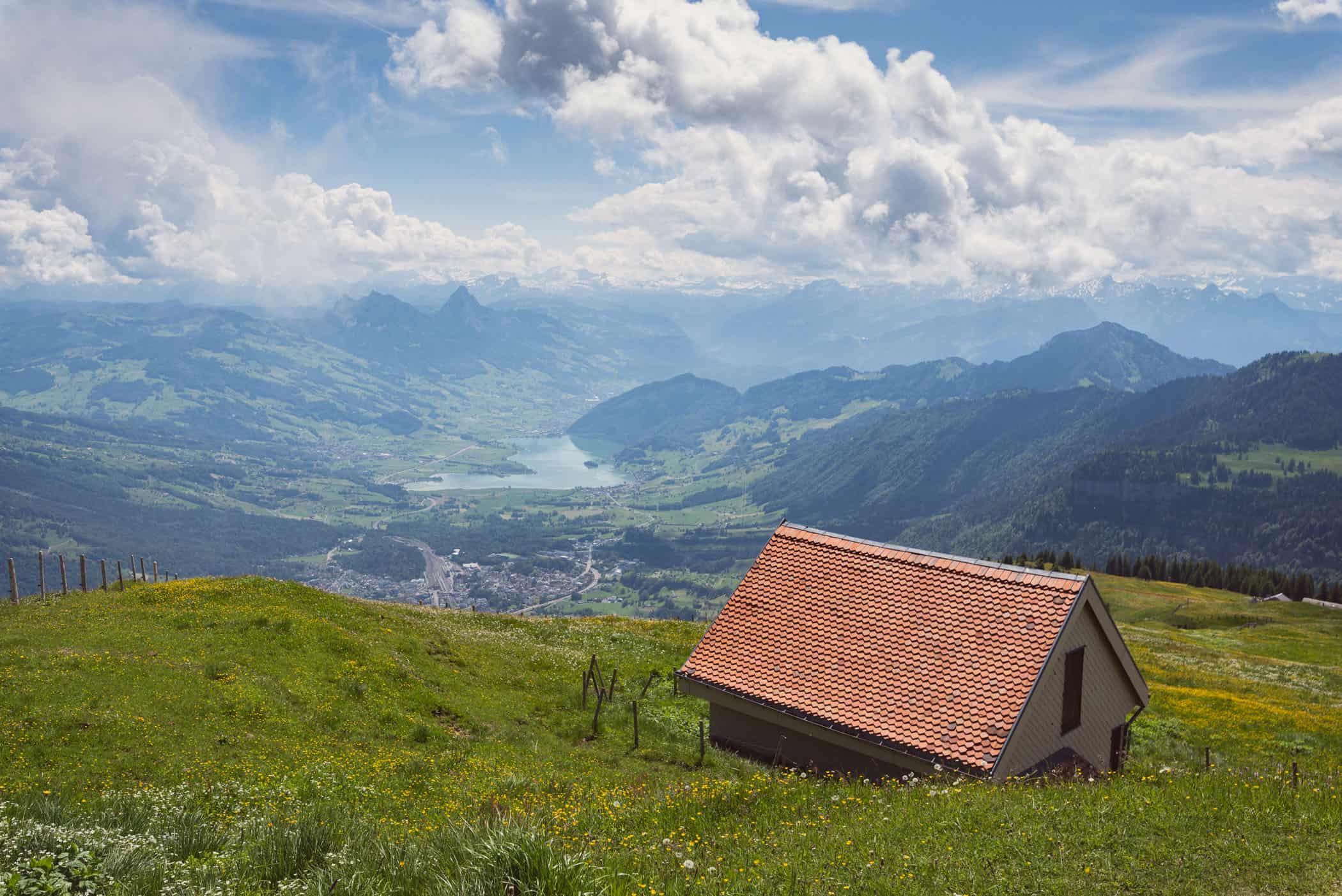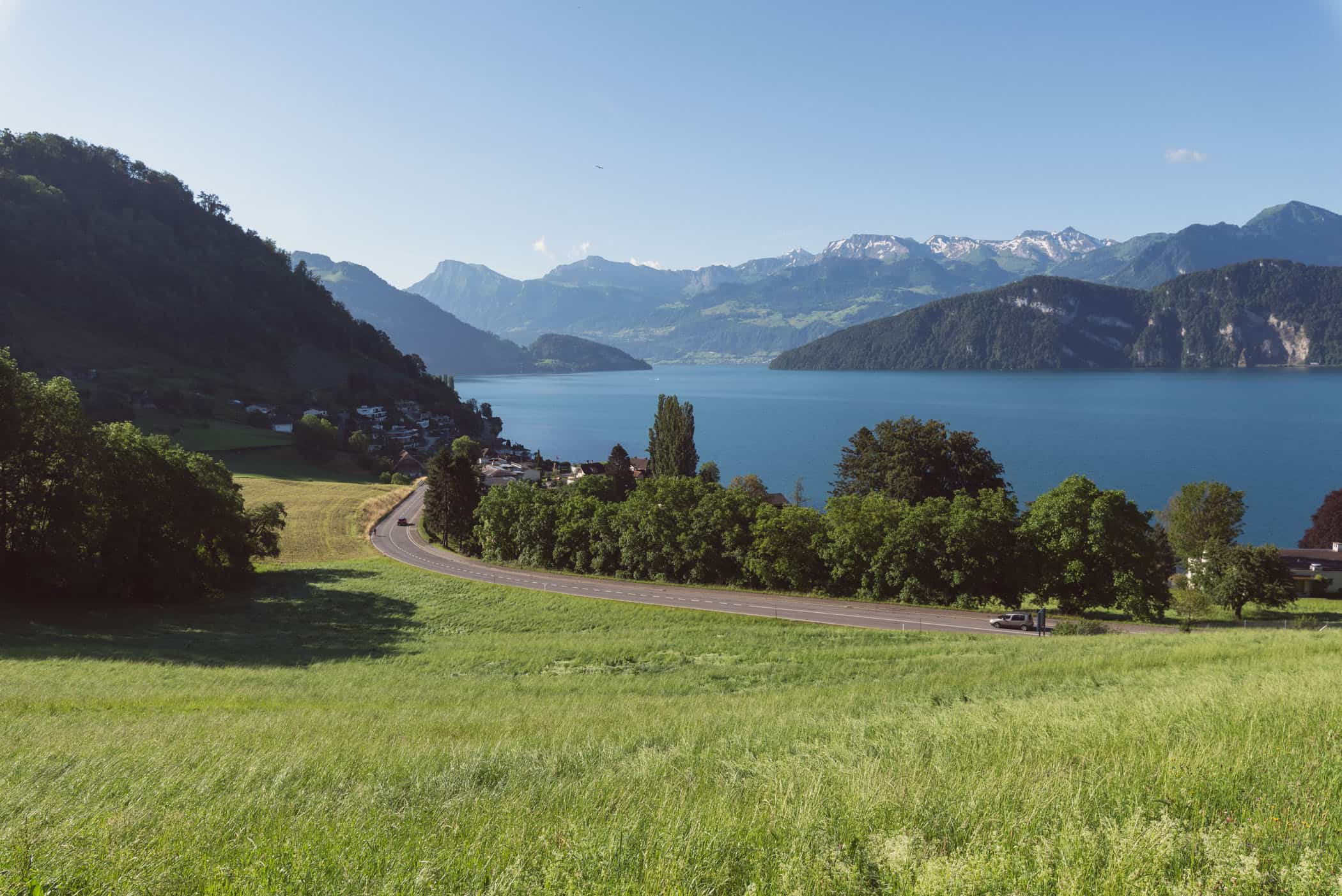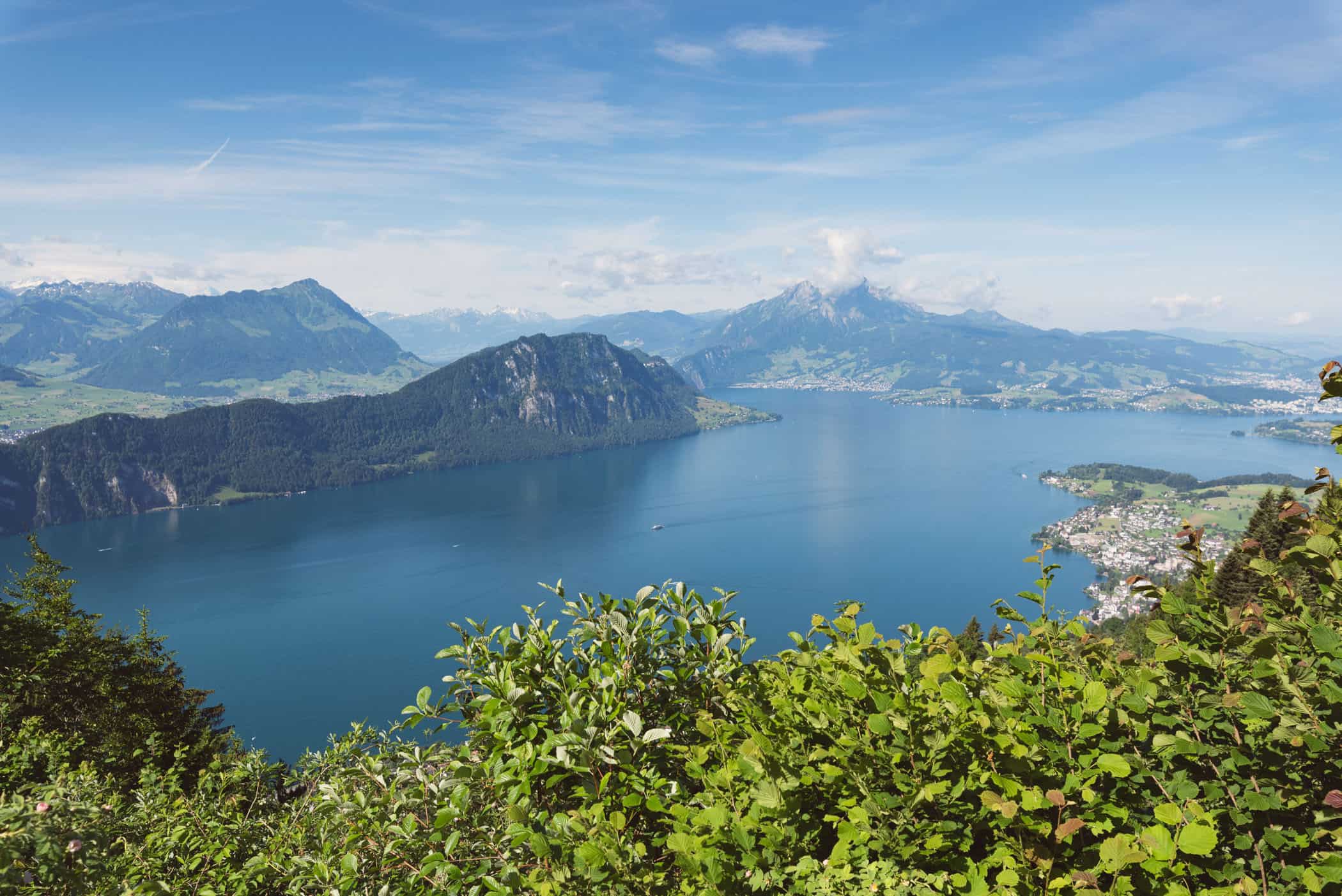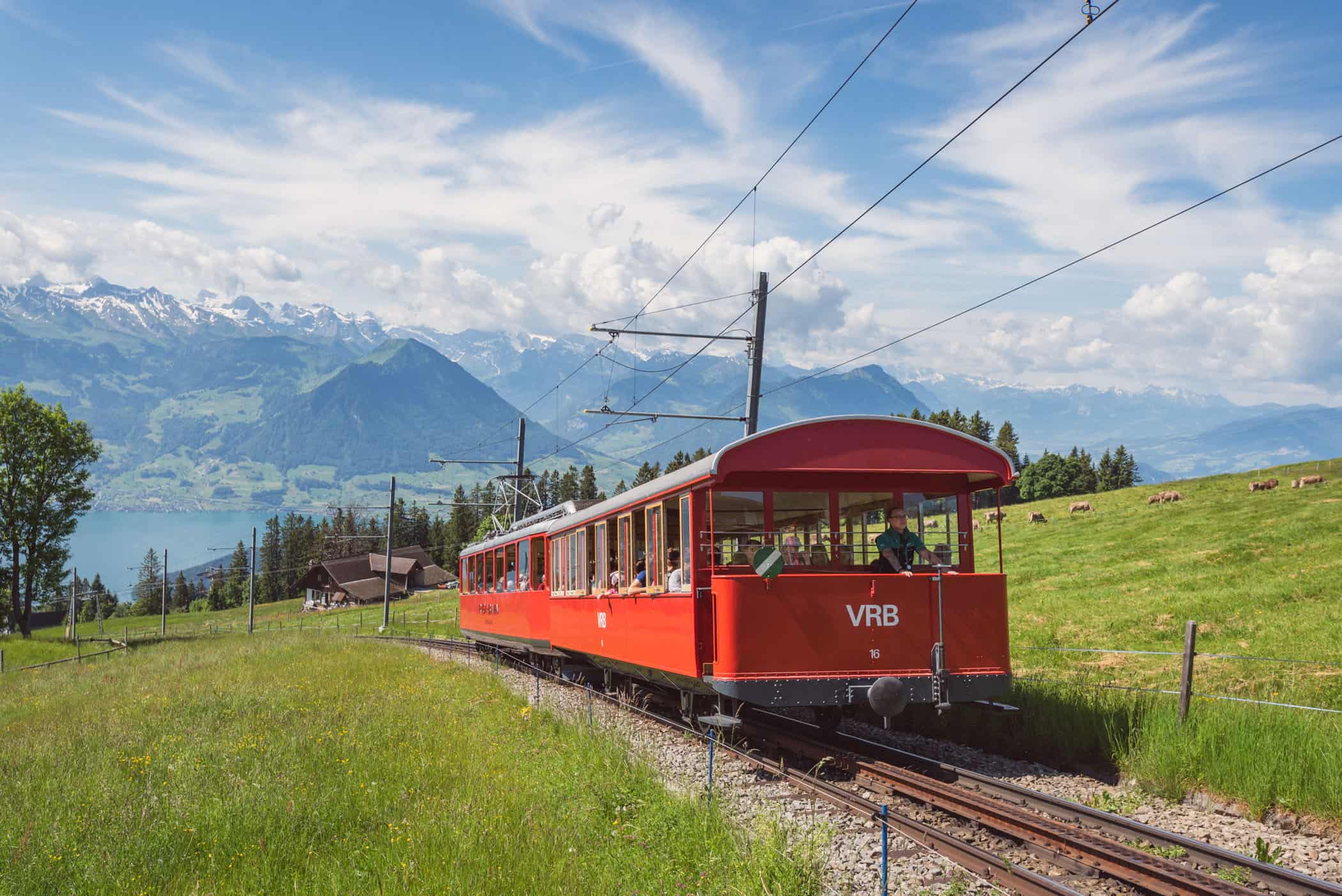Hike | Lucerne | Switzerland
Hiking up Mount Rigi on the Mark Twain Trail
Text | Anninka Kraus
Photography | Tobias Kraus

Switzerland
Mount Rigi is Switzerland’s Queen of Mountains and ‘an imposing Alpine mass, six thousand feet high, which stands by itself, and commands a mighty prospect of blue lakes, green valleys, and snowy mountains–a compact and magnificent picture three hundred miles in circumference,’ as American author Mark Twain (1835 – 1910), alias Samuel Llonghoren Clemens, put it.
I knew Twain as the author of the classics like ‘The Adventures of Huckleberry Finn’ and ‘The Adventures of Tom Sawyer’ but not as a travel writer. He did however travel extensively and being a writer, these travels turned into words.
In 1878, Twain scaled Mount Rigi, the very mountain dominating the splendid panorama of Zug that I admire every day. The 10.4km Mark Twain theme trail from Weggis to Rigi Kulm with eight information boards about Twain and Mt Rigi lining the path was inaugurated in 2010, commemorating the 100th anniversary of the writer’s death. It follows the traditional route used to reach the summit before Europe’s first cogwheel train opened in 1871. Twain opted for the walk on the ancient route, as did we.
But how he managed to draw it out to 3 days instead of the 2:45 hours it takes walking at a normal pace, I really had no idea. Perhaps a 3-day hike made for a longer chapter XXVIII ‘A Trip to Mt. Rigi’ in his book ‘A Tramp Abroad’. When we arrived at Felsentor, a mediation retreat in a clearing in the woods, after 1:10 hours where Twain passed through on the afternoon of his second day on the trail, I wondered whether hiking in these days was considered a sport, pastime or madness.
My great-grandmother was born in 1899. While she was still a slim, agile lady at 94 when I last saw her before her death, sports did not exist in her vocabulary. She lived through World War I and II and feeding a family was of a higher priority than a healthy, active lifestyle.
After reading Twain’s hilarious account of the climb a few days later, the reason for his slow ascent however was no longer a mystery. He was not an early riser.
The first morning he got up at half past eleven. The next day he rose at half past three – in the afternoon. And on Rigi Kulm, he rushed out to see the sunrise at half past seven, only to realize that he’d missed that by a day and was watching the sun set instead.
‘We could not speak. We could hardly breathe. We could only gaze in drunken ecstasy and drink it in,’ Twain described the spectacle, at the time still thinking it was the break of day. Whether break or close of day hardly matters though – so long as the sun hovers just above the horizon, the mountain panorama is magical.
The trail started off as an uphill climb on farm roads that see very little traffic if any. It then led through the forest on a proper hiking path – an earthen, uneven trail zigzagging up rough steps as you’d expect from a hike. Yet the higher the trail wound and the spruce and birch trees thinned, the easier it became. Almost disappointingly easy and if it wasn’t for 1.250 vertical meters to surmount, I’d rate this ‘trail’ a walk.
What I greatly value in the mountains, is the tranquility resulting from the absence of cars. Kaltbad at 1.400m, along with other Swiss villages such as Zermatt, Melchsee-Frutt and Stoss, is car-free and thus quiet despite strongly promoting tourism on the mountain.
What I don’t value on the other hand, is the Swiss’ newfound preference for cubist-inspired modern architecture. I call these buildings ‘impersonal concrete bunkers with elongated gun ports for windows’ and ‘hideously ugly’.
Unfortunately, Kaltbad has not been spared from this lapse of taste and immediately adjacent to beautiful wooden chalets and the Mineralbad & Spa Rigi Kaltbad, the newly built condo blocks stuck out like a sore tooth. The spa resort that opened in 2012, offers a luxurious spa experience by the looks of the infinity pool and sun deck extending towards the surrounding Alpine mountainscape. It’s fed by the ‘Three Sisters Springs’ spring. The cold water (thus the name Kaltbad, ‘cold bath’) was once known for its healing powers and a legendary pilgrimage destination for those suffering from back pain and fever. Today, it is still rich in minerals but no longer healing and fortunately heated.
The last 45 minutes across open farmland to the summit were easier to walk still, pram-friendly basically. You won’t find a place more Swiss than these steeply rising meadows dotted with surprisingly large cows nibbling on wildflowers to the sound of ringing cowbells around their necks. The views that Twain thought were, ‘as charming as glimpses of dreamland,’ paint an equally stereotypical image of Switzerland.
One that I almost envied the dairy farmers for, who gaze upon Lake Lucerne, at the foot of Mount Rigi sparkling in countless shades of blue, every day. On this sunny summer’s day, countless sailboats competed for attention with diamonds painted on the water by the reflection of the sun.
This panorama is no well-kept secret. Mostly Asian tourists fill wagon after wagon of the cockwheel trains ascending the mountain from Vitznau and Arth-Goldau, and the quiet idyll was quickly lost to chattering noises in a foreign language as we drew closer to the summit.
I was surprised by the intense turquoise colour of Lake Zug when Lake Lucerne, Lake Lauerz and Lake Aegeri were all of a dark blue colour. And despite the hot dry summer, the Swiss Plateau (Schweizer Mittelland) in the northwest looked an undulating lush pastoral landscape and the rugged Alps in the south were still snowcapped in June.
On the return trip via cable car from Kaltbad, we descended at a gaspingly steep angle back towards Weggis, a lakeside municipality with little more than 4.000 inhabitants on the northeastern shore of Lake Lucerne. Twain believed this to be ‘the loveliest [place] in the world, and the most satisfactory. The scenery is beyond comparison beautiful… Sunday in heaven is noisy compared to this quietness.’
I fully agree with the quietness of the place but the loveliest in the world it is not. The scenery however is indeed ‘beyond comparison beautiful’.
related.
Hike the “Mountain of Dragons”: Mt Pilatus
Guide to hiking the famous Tour du Mont Blanc through Italy, France and Switzerland
Hike Switzerland’s most famous ridge line: Augstmatthorn



















Lucerne | Switzerland
Hike | Loop trail | 3-5 hours
track details.
Start/End: lower cable car station Weggis
Route: lower cable car station Weggis – Felsentor – Rigi Kaltbad – Rigi Staffelhöhe – Rigi Staffel – Rigi Kulm (Mount Rigi summit) – Rigi Staffel – Rigi First – Rigi Kaltbad – Weggis (last leg via cable car)
Distance: 13.2km
Time: 3:45 hours
Elevation gain: 1320m / loss: 400m (lowest point: 490m / highest point: 1760m)